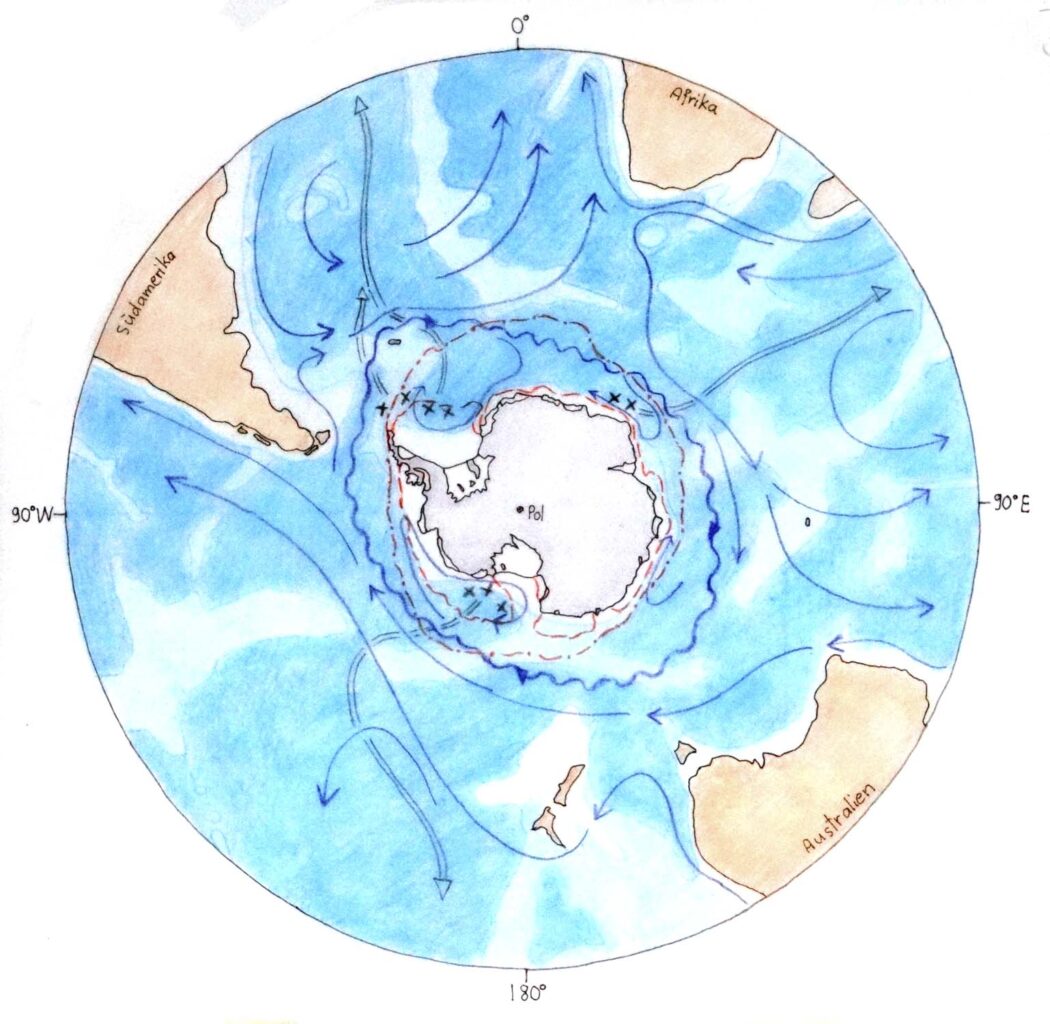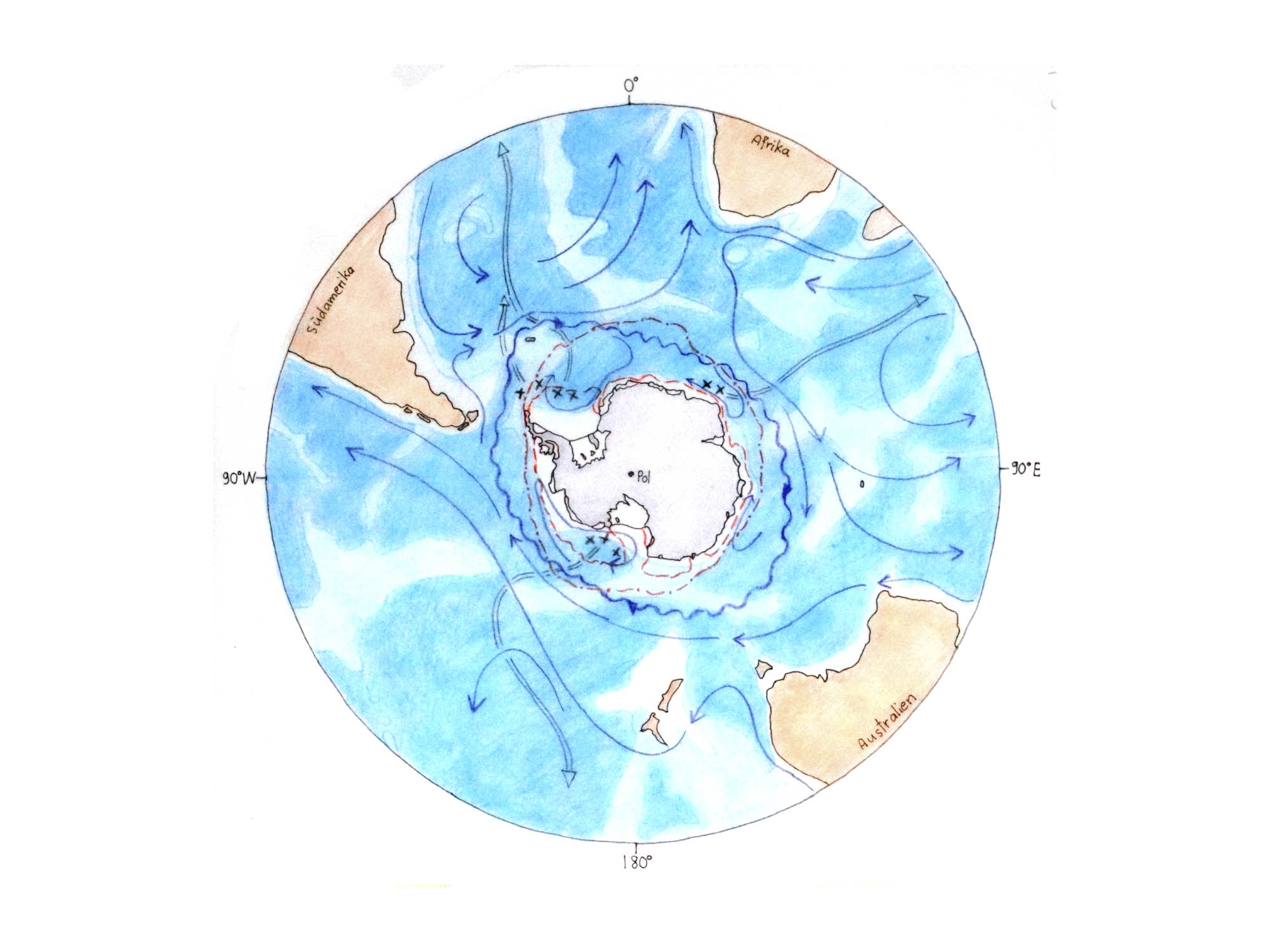Antarctica is under human protection, but human-induced climate disruption is undermining this endeavour. The melting of the ice-shelf, now categorised as “unavoidable”, is a reflection of thinking that is separated from the processes of life.
The Antarctic continent was designated and preserved as a place for scientific observation and research by the Antarctic Treaty that came into effect in 1961. It was further protected from the exploitation of raw materials in 1991 through actions initiated by Greenpeace in the 1980s. Over the past two decades, the research community has been heavily involved in documenting changes in sea ice conditions, glacier retreat, and ocean currents in connection with marine life. It is now apparent that the energy conversions set in motion by humans using oil, gas, and coal are leading to the gradual destruction of Antarctic glaciers and the living conditions in the world’s oceans. An important article was published in the prestigious bulletin Nature Climate Change on October 23, 2023—it was immediately judged to be of significance and high quality by the international research community.1 The title of the article is “Unavoidable future increase in West Antarctic ice-shelf melting over the twenty-first century”. The use of the word “unavoidable” is unusual and new. Antarctic events play a key role in understanding the drama of climate breakdown. This will be explained in a simplified form below.
The Antarctic continent, with the South Pole at its centre, is surrounded by sea ice—a floating mass of ice that grows and shrinks rhythmically with the seasons. This ice mass is encircled by a strong, eastward-moving ocean current that extends from the surface to great ocean depths (see illustration). This current is in a moving relationship with all other oceanic currents. Particularly in the bays of the Antarctic, the ocean current turns around and flows first southwards, then westwards under the sea ice towards the land mass (see illustration). The current now washes beneath the large glaciers that are connected to the mainland and protrude into the sea, and as water temperatures warm up, the glaciers melt away faster and faster from underneath. This melting can lead to glacier instability, so that large sections of glacier break off, enter the Antarctic Circumpolar Current as icebergs, melt and raise the sea level.

Separating Inorganic Processes from Life Processes
The topographical conditions of the subsurface sea areas of the West Antarctic shelf have been well studied. There, the inflowing ocean current has made the overlying glaciers unstable with alarming acceleration.2 3 Measurements show that the water temperature and the speed of ocean currents around Antarctica have risen rapidly and severely. This is linked to anthropogenic global warming, which, with a certain delay, is now also affecting the vast water masses of the oceans.
If the water that flows under the Antarctic sea ice is getting warmer, it is not only the existence of the Antarctic glaciers that is being disrupted—there are other connections to consider. When the water flows back to the submarine continental margin, an important event occurs. There, we find the rhythmically pulsating life and death of unicellular plant and animal plankton, combined with a diverse bacterial life. The sinking of the above-mentioned water masses to depths of several kilometres is related to this life metabolism. This sinking water stimulates and brings rhythm into the entirety of all ocean water currents at the surface and at intermediate depths, as well as the important bottom current.4
The sinking has weakened in recent times and, in addition, the uptake and transport of carbon compounds to the depths of the sinking zones is decreasing due to the rising water temperature in the area of the sea ice. Less of the greenhouse gas, carbon dioxide, is absorbed from the air into the sinking water. The rise in the temperature of the ocean water and its effect in the Antarctic region is therefore linked to all the processes that climate researchers are investigating for regions inhabited by humans.
This connection is not a simple one, where a cause is simply followed by a certain effect. These are processes where causes and effects are in constant reciprocal interaction. In this way, Antarctic events can give us the incentive to train agile thinking, so that processes in the inorganic realm are not separated from rhythmically driven life processes, however inconspicuously they may appear in the Antarctic. Such living thinking can be the key to recognising climate breakdown and changing the way we treat the earth.
Key to the Antarctic map, created by HU Schmutz
White at the edge of the Antarctic: glacier resting on water
Pale blue: sea depth up to 200m
Light blue: sea depth up to 2000m
Dark blue: sea depth up to 6000m
Red broken line: extent of sea ice in January
Red dot-dash line: extent of sea ice in July
Purple wavy line: Antarctic Circumpolar Current
Purple line: surface currents
Black crosses: sinking zones of surface water
Black double line: bottom currents
Translation Christian von Arnim
Footnotes
- A Naughten et al., “Unavoidable future increase in West Antarctic ice-shelf melting over the twenty-first century“, Nature Climate Change, 2022.
- TS Dotto et al., “Ocean variability beneath Thwaites Eastern Ice Shelf driven by the Pine Island Bay Gyre strength”, Nature Communication, 2022.
- J Lauber et al., “Warming beneath an East Antarctic ice shelf due to increased subpolar westerlies and reduced sea ice”, Nature Geoscience, 2023.
- HU Schmutz, “10. Klasse – Die Erde in Bewegung” [Year 10 – The Earth in Motion] in Erdkunde in der 9. bis 12. Klasse an Waldorfschulen, eine Gesamtkonzeption [Geography in Year 9 to 12 at Waldorf Schools, an Integrated Concept], (Stuttgart, 2001).





